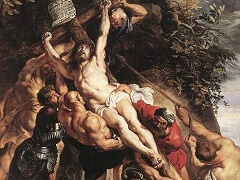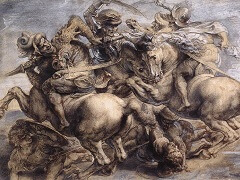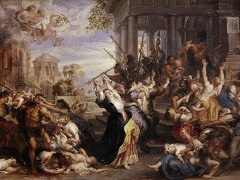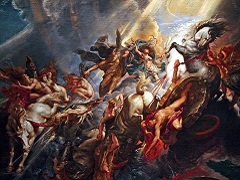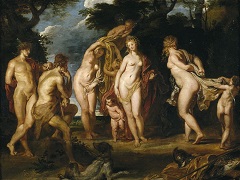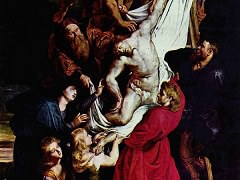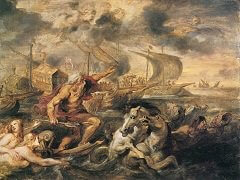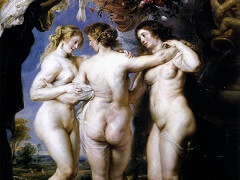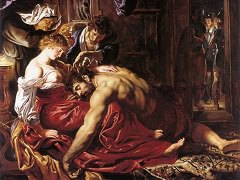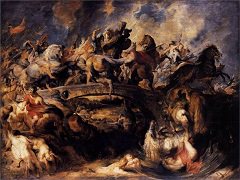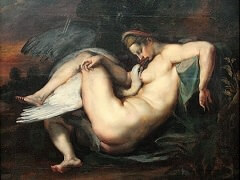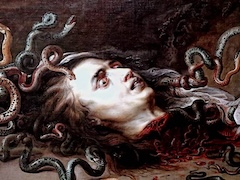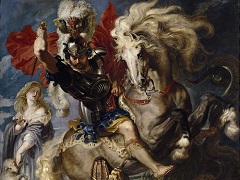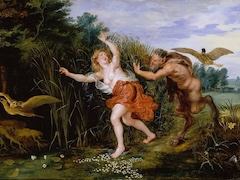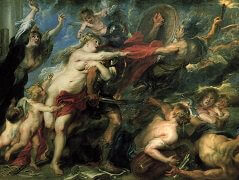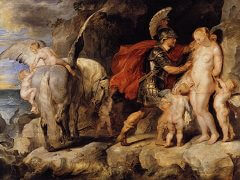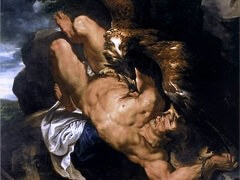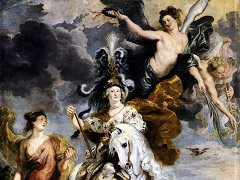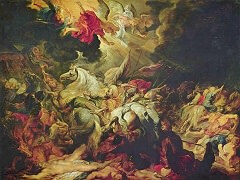Flemish Kermis, 1635 by Peter Paul Rubens
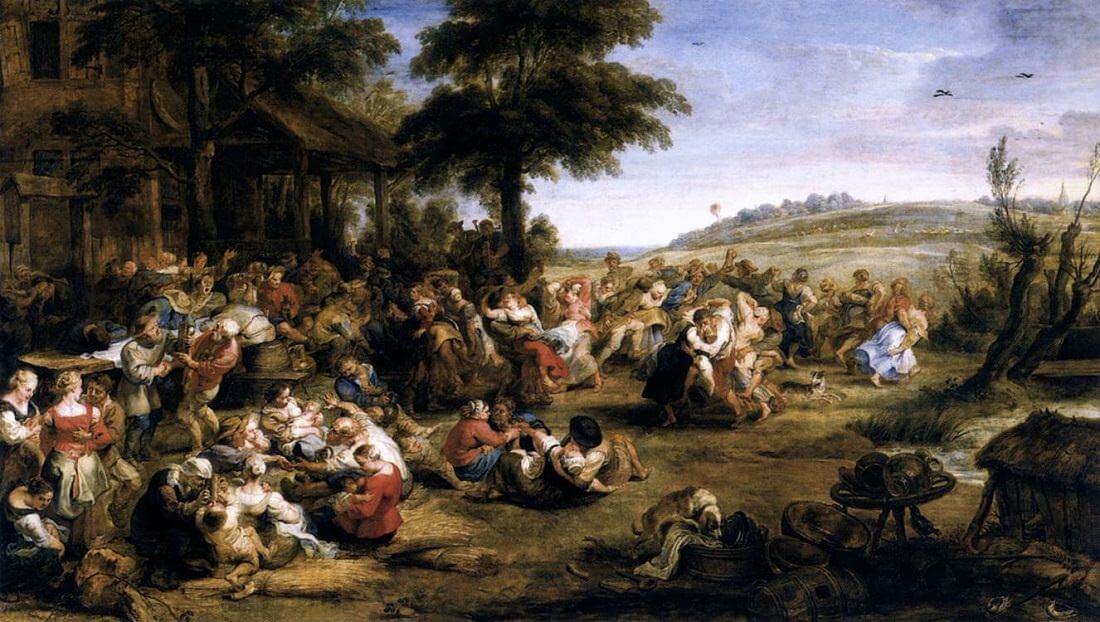
With the famous Flemish Kermis, Rubens reinforced his reputation as a Protean artist by showing himself the sole heir of the great Bruegel - whose works he collected. At Het Steen, he was immensely happy, wandered among the trees, discovered his landscape gifts, and anticipated the discoveries of Impressionism. Whereas the landscape artists of his time tended to consider the little figures with which their paintings were studded as mere accessories, to be entrusted for the most part to the diligence of their assistants, Rubens restored man's prominence, and showed him sharing in the seasonal life of nature. In the Brueghelian Kermis, Rubens returned to a traditional Flemish scene, with all its familiar episodes: here the joyful tread of the dancing, there the coarse antics of the drunk. But the sheer sweep of the painting frees the subject from its usual tenor of vulgarity and triviality. There is no Naturalism in this painting, rather a kind of ballet whose different scenes unfold beneath the poetry of Rubens' sky.

